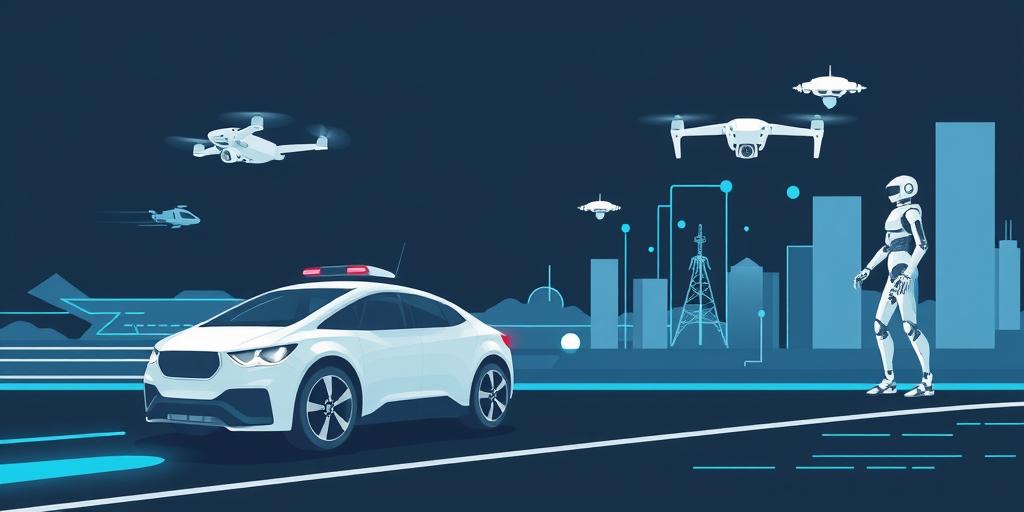The Buzz Around Autonomous Systems
Autonomous systems are rapidly transforming industries, from transportation to manufacturing. But what exactly are they, and why are they generating so much excitement?
What are Autonomous Systems?
At their core, autonomous systems are machines or programs capable of operating independently without human intervention. This autonomy stems from their ability to:
- Sense: Gather information from their environment through sensors (cameras, lidar, radar, etc.).
- Analyze: Process this information using algorithms and AI models.
- Decide: Make decisions based on the analysis, choosing the best course of action.
- Act: Execute those decisions by controlling motors, actuators, or other outputs.
Examples of Autonomous Systems
- Self-Driving Cars: Perhaps the most visible example, these vehicles navigate roads, avoid obstacles, and transport passengers with minimal human input.
- Drones: Used for everything from package delivery to aerial photography, drones can fly pre-programmed routes or react to real-time conditions.
- Robotics in Manufacturing: Robots perform repetitive tasks on assembly lines, increasing efficiency and reducing the risk of human error.
- AI-Powered Trading Platforms: These platforms automatically execute trades based on market analysis and pre-set algorithms.
- Smart Home Devices: Systems that adjust lighting, temperature, and security settings based on user preferences and environmental conditions.
The Benefits of Autonomous Systems
- Increased Efficiency: Automation can streamline processes, reduce downtime, and optimize resource allocation.
- Improved Safety: By removing humans from dangerous environments, autonomous systems can prevent accidents and injuries.
- Reduced Costs: Automation can lower labor costs, minimize waste, and improve overall productivity.
- Enhanced Accuracy: Machines can perform tasks with greater precision and consistency than humans, leading to fewer errors.
- New Opportunities: Autonomous systems can open up new possibilities for innovation and economic growth.
Challenges and Considerations
- Ethical Concerns: Questions surrounding accountability, bias, and job displacement need careful consideration.
- Regulatory Frameworks: Governments are grappling with how to regulate autonomous systems to ensure safety and fairness.
- Technical Limitations: Autonomous systems are not perfect and can still be vulnerable to errors or unforeseen circumstances.
- Security Risks: Protecting autonomous systems from hacking and malicious attacks is crucial.
- Public Acceptance: Overcoming public skepticism and building trust in autonomous technologies is essential for widespread adoption.
The Future of Autonomous Systems
Autonomous systems are poised to become even more pervasive in the coming years. As technology advances and costs decline, we can expect to see them integrated into more aspects of our lives. This will require careful planning, collaboration, and a commitment to addressing the ethical and societal implications of these powerful technologies.
Whether it's optimizing supply chains, enhancing healthcare, or exploring new frontiers, autonomous systems hold tremendous potential to shape the future. Staying informed and engaged in the conversation is crucial for navigating this exciting technological landscape.









